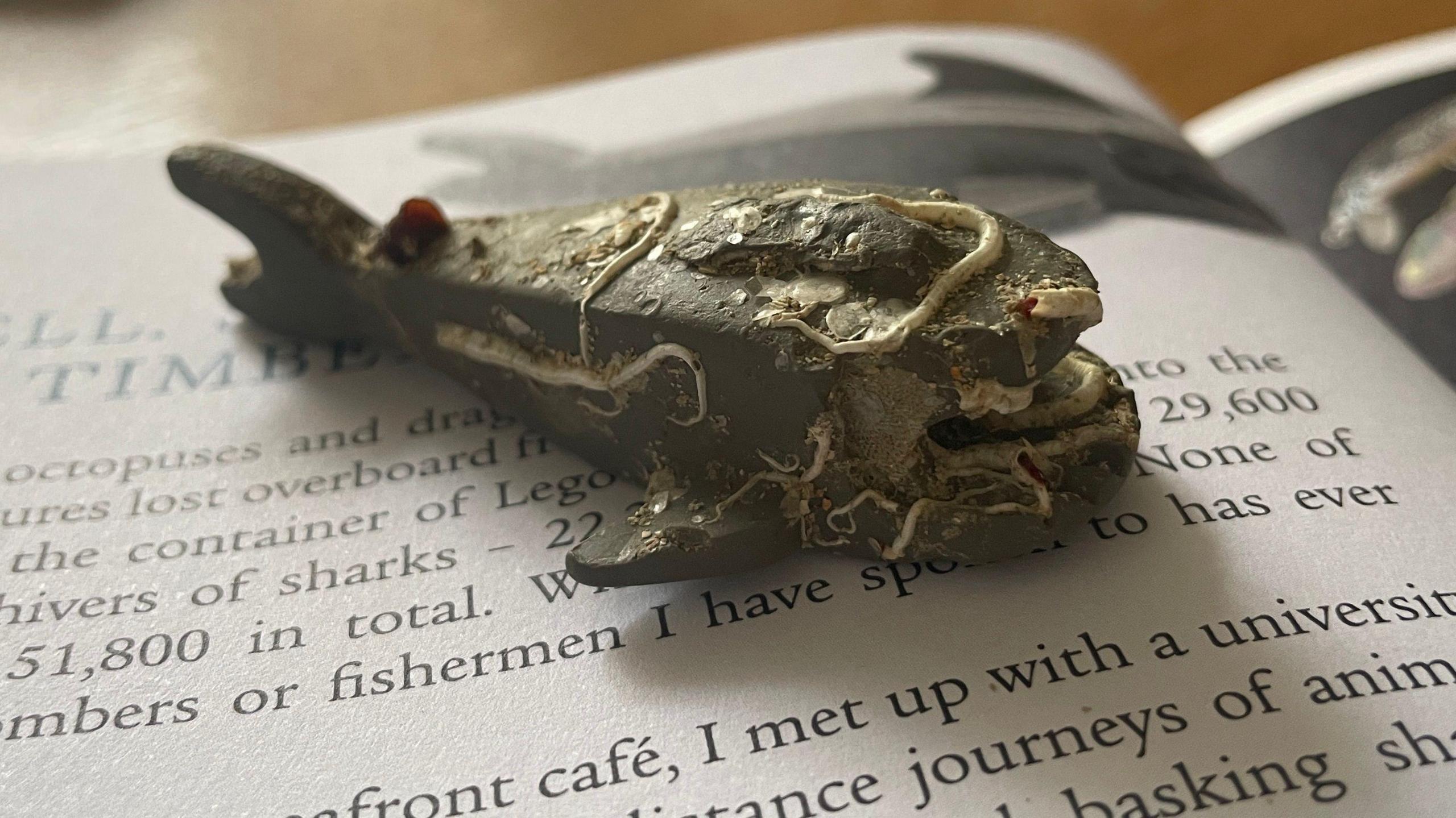The lost Lego still washing up after 28 years
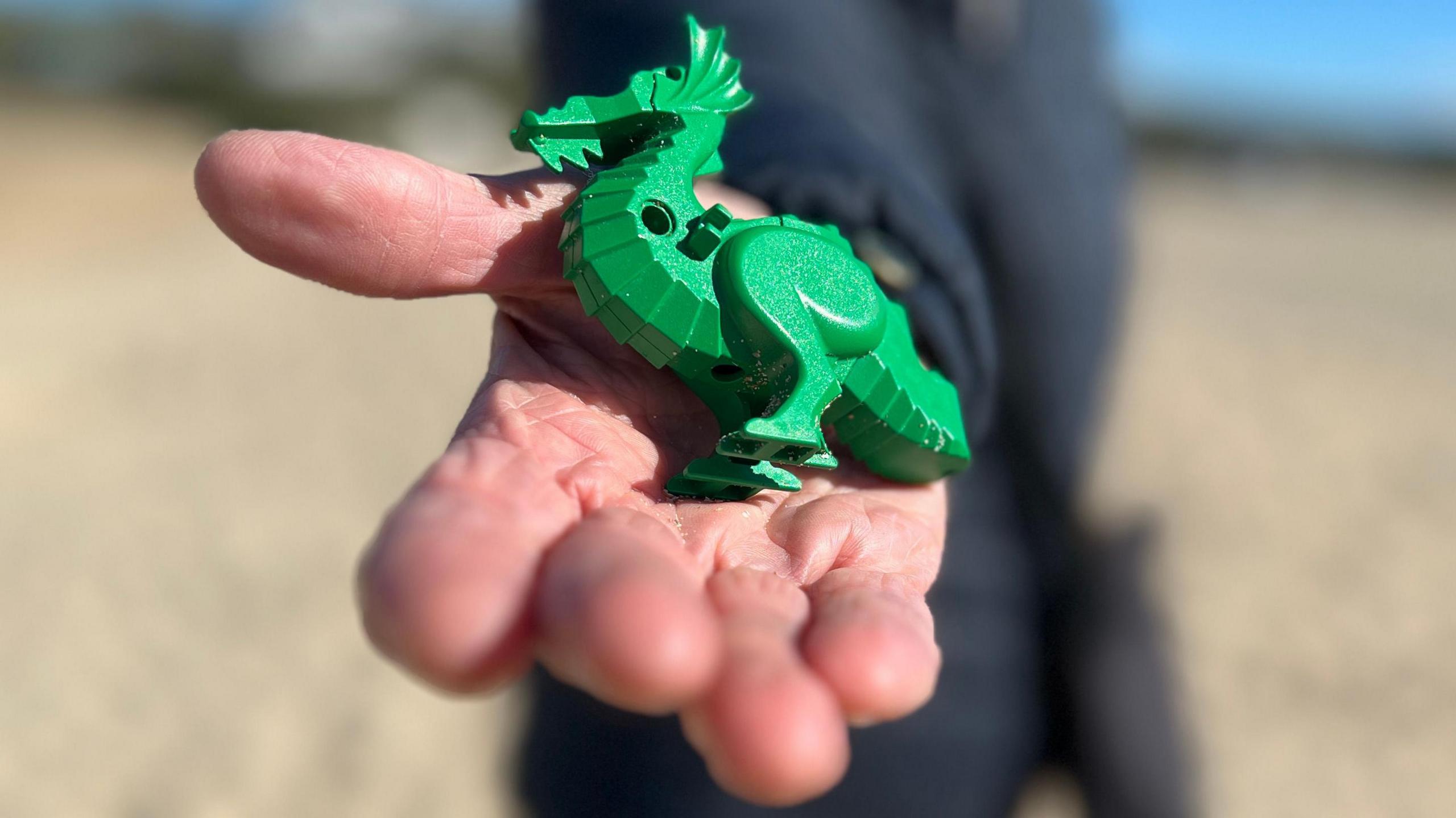
There be dragons: Green ones are among the hardest to find
- Published
What began as a family beachcombing hobby turned into a global mission to track down Lego lost at sea, and raise awareness about plastic pollution.
Tracey Williams was on holiday with her children in Bigbury Bay in south Devon in 1997 when they found their first "tiny treasure" - a piece of Lego washed ashore from a container lost from a cargo ship hit by a rogue wave off Cornwall.
Since then she said people have flown in from the US, Italy, Switzerland, and Belgium just to hunt for the pieces on Cornish beaches.
Mrs Williams said: "I've done interviews with Italian bloggers, American journalists; it's amazing how much interest there is."
As well as travelling over to search finds have been reported across the world including in the US and Australia.
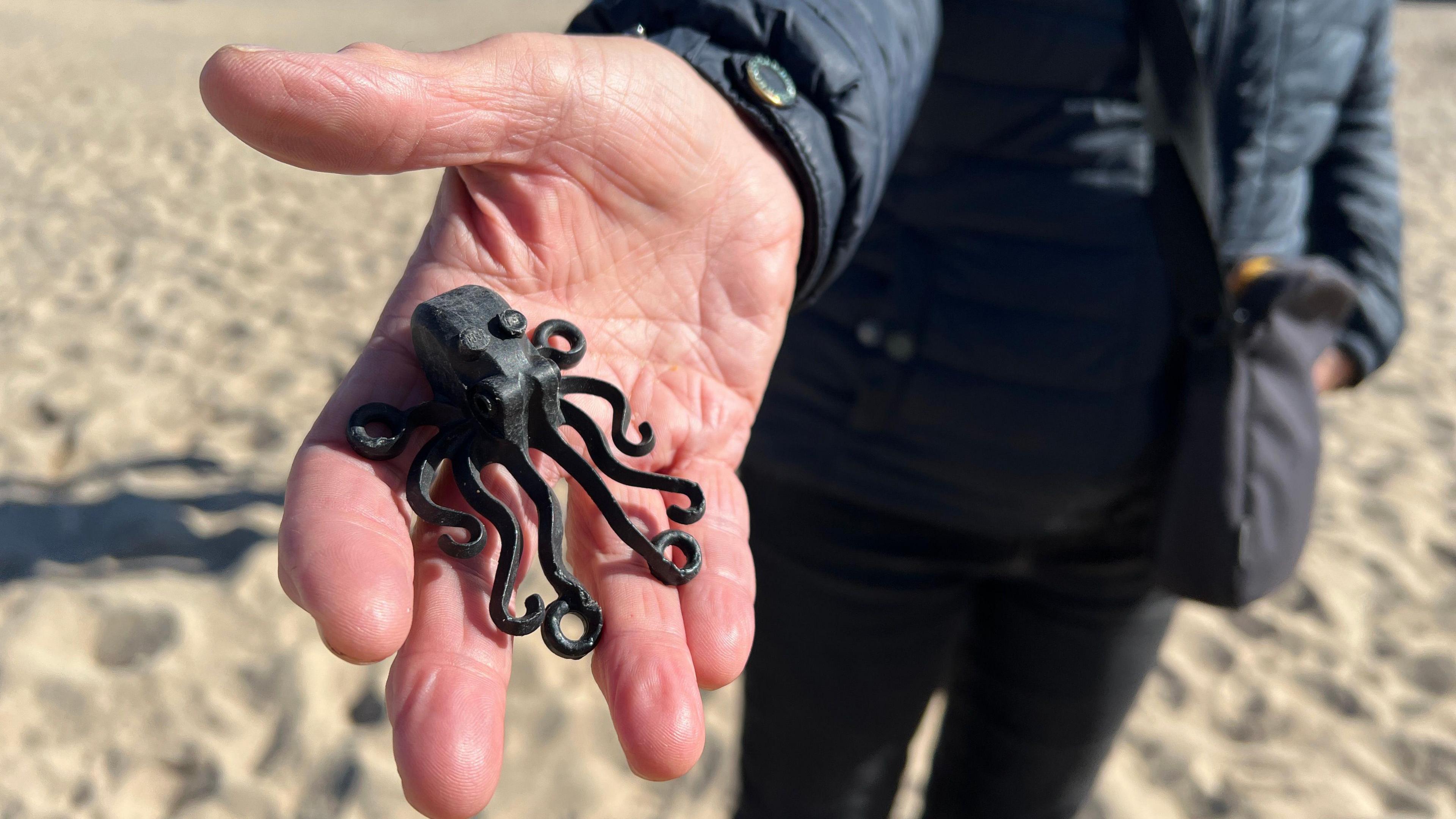
Octopuses are tricky to find because of their shape and colour
The cargo ship Tokio Express was travelling from Rotterdam to New York, when it was hit by a wave caused by a storm off Land's End on 13 February 1997 and scattered nearly five million pieces of Lego across the ocean.
Mrs Williams, known affectionately as the Lego Lady, never imagined that rogue wave would change her life.
After their initial finds in 1997, there was a gap until she moved to Cornwall in 2010 and discovered the Lego was still coming ashore on her first beach walk.
Realising the spill had not gone away, she created the Facebook page Lego Lost at Sea to track sightings and connect with other beachcombers.
What started as a modest project quickly snowballed.
After a BBC feature, her follower count surged from 400 to more than 55,000 in just a few days.
Fisherman lands first-ever 'lost' Lego shark
- Published10 August 2024
Rare Lego octopus found on beach after 27 years
- Published27 April 2024
'Millions of Lego pieces still lost at sea'
- Published15 July 2023
The Lego spill has become a gateway to discussing plastic pollution in a way that is engaging and accessible, especially for children, said Mrs Williams.
"Picking up plastic from the beach is a relentless task," she said. "But beach cleaners often see finding a piece of Lego as a reward."
Many of the Lego pieces were sea-themed such as octopuses, sharks, flippers and life jackets.
"It's as if Neptune was having a joke," she laughs. "Of all the things to be lost at sea, it was sea-themed Lego."
Some Lego pieces like ones depicting a reef have even been inhabited by sea life.
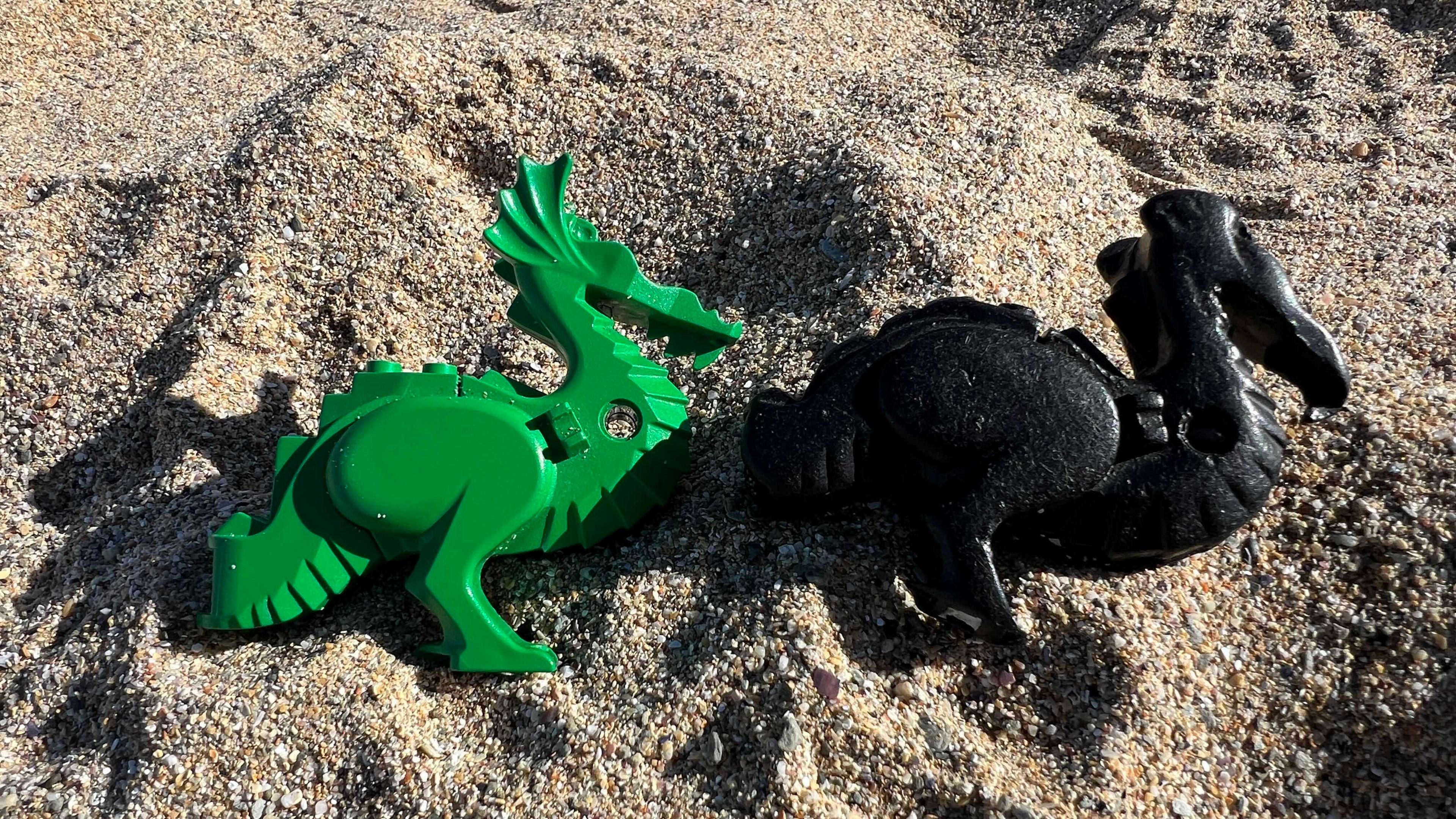
The dragon on the right shows the wear and tear from the waves
In 2013, a beachcomber in Galveston Island, Texas, found a black Lego octopus tangled in dried sea grass, which is possibly from the original spill.
Most common finds include:
Flippers: More than 352,000 pairs were lost in black, blue and red
Life jackets: More than 26,000 bright yellow life jackets were scattered across the sea
Scuba tanks, flowers, and brooms: These turn up regularly, especially around hotspots such as Perranporth and Whitsand Bay in Cornwall
Rarest finds:
Octopuses: Only 4,200 were in the container, making them highly prized. Their dark colour and seaweed-like shape make them hard to spot
Green dragons: There were 33,427 black dragons inside the shipping container but only 514 green dragons
Of the 97,000 magic wands, 15,800 witches' hats and 18,200 frying pans lost, none have yet been reported as found
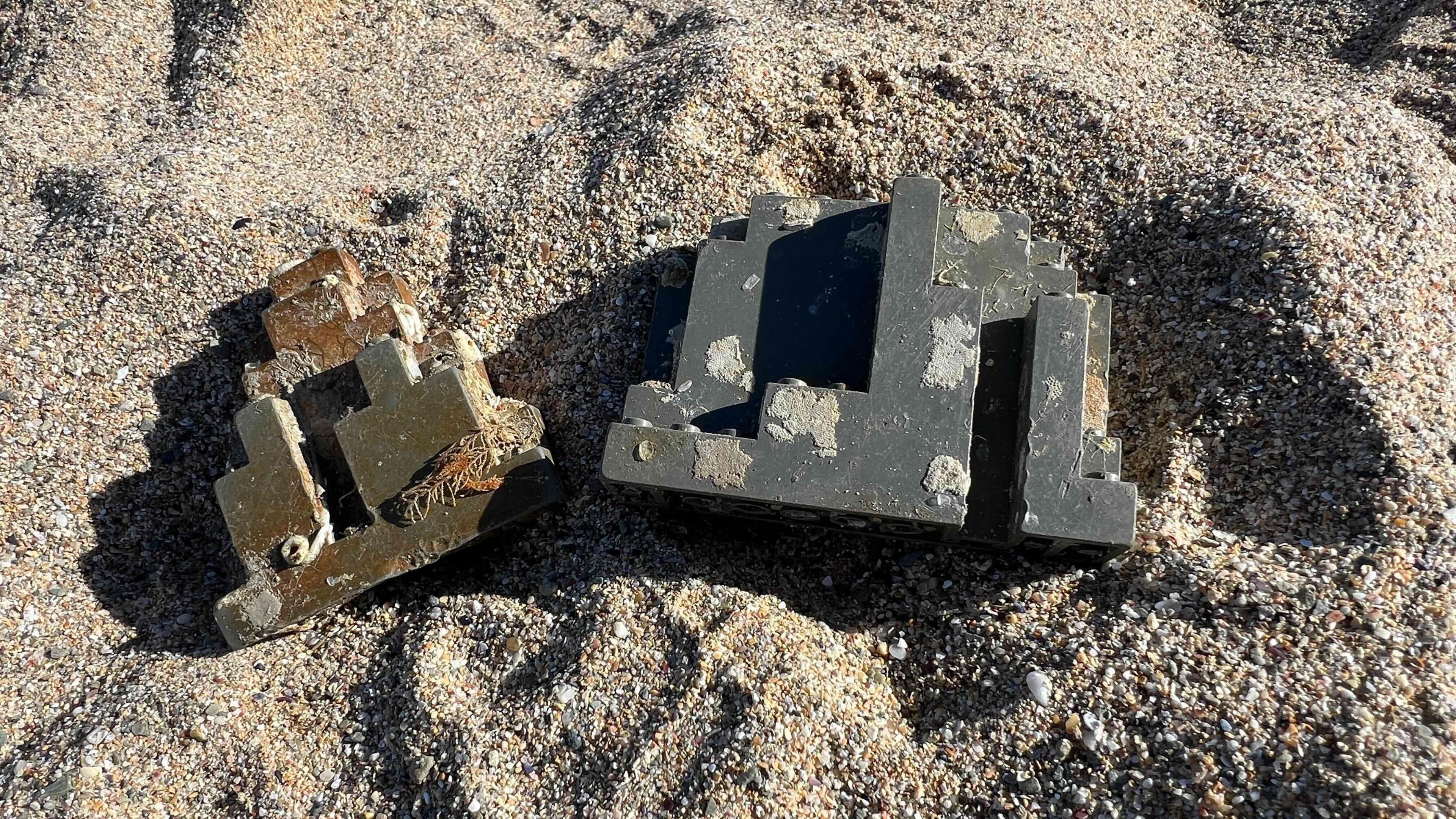
Some Lego pieces like this artificial reef have been inhabited by sealife
She has written a book about her Lego journey and is planning a book for children.
Her work has also contributed to scientific research, helping studies on how long plastic lasts in the marine environment.
Lego Lost at Sea was awarded Rescue Project of the Year in the Current Archaeology Awards 2023.
"We've learned how far it can drift, how it moves along the seabed and on the surface," she said.
"And we're hoping to publish more scientific papers based on the data we've collected."
So next time you are walking along the coast, keep your eyes peeled.
That tiny pirate hat or miniature sword half-buried in the sand might just be a relic from the Tokio Express.
And, if you find something unusual, Mrs Williams would love to hear about it
Follow BBC Cornwall on X, external, Facebook, external and Instagram, external. Follow BBC Devon on X, external, Facebook, external and Instagram, external. Send your story ideas to spotlight@bbc.co.uk, external.
Related topics
- Published10 August 2024
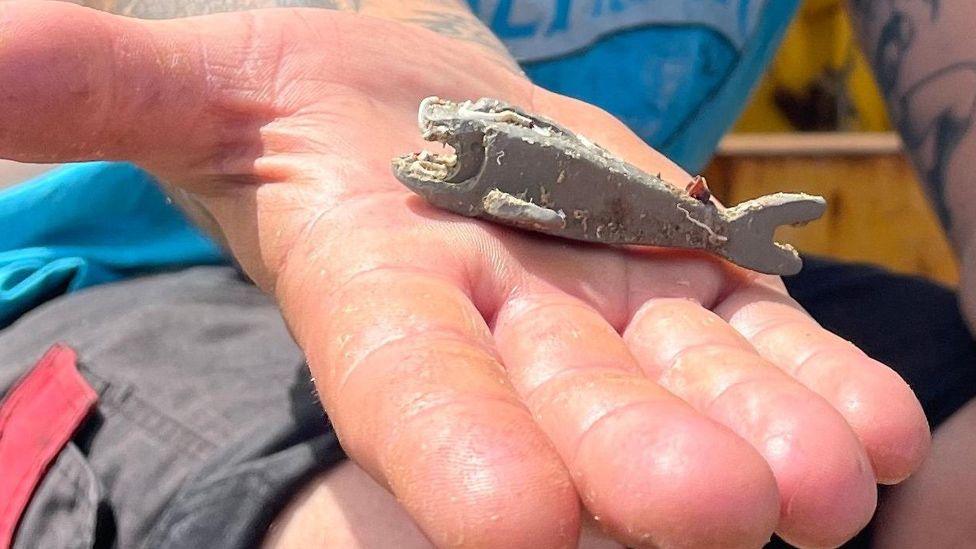
- Published27 April 2024
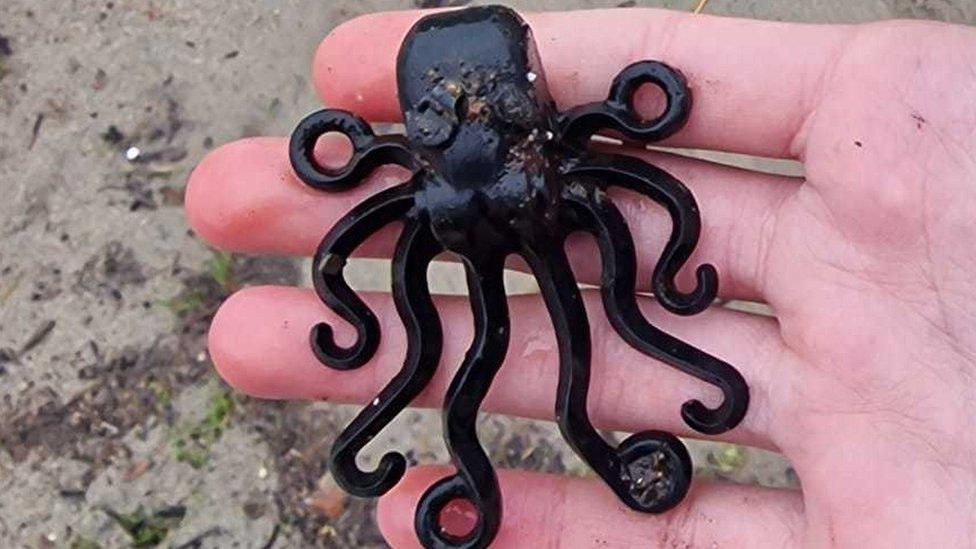
- Published15 July 2023
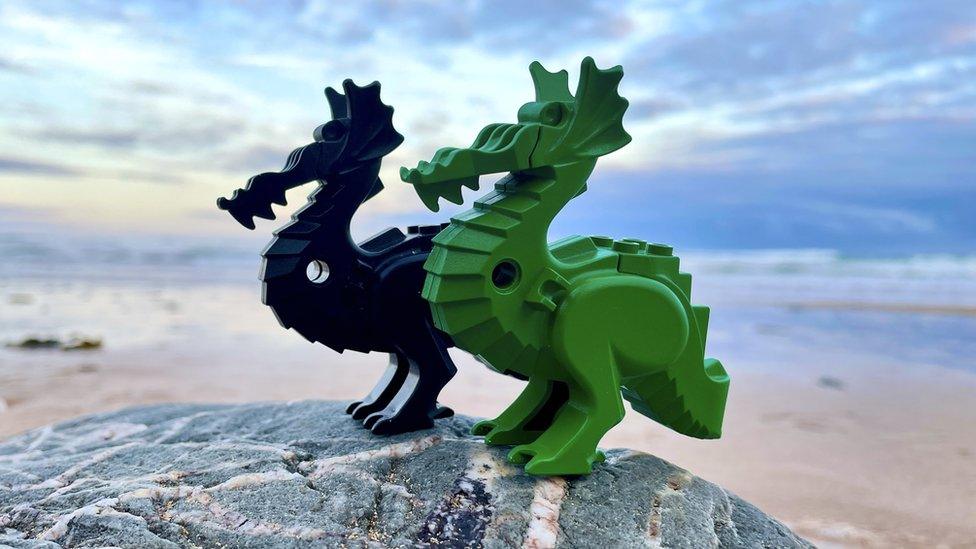
- Published21 July 2014
- Published29 December 2024
